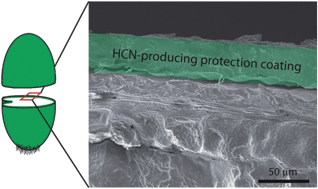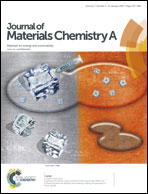Induced cyanogenesis from hydroxynitrile lyase and mandelonitrile on wheat with polylactic acid multilayer-coating produces self-defending seeds†
Abstract
Wheat is the predominant crop in the world and vermin infestation remains a serious issue regarding its storage and field cultivation, especially in developing countries. In addition to physical control methods, pesticides are often applied. However, their usage includes a number of concerns regarding environmental and ecological impacts. In the present work an alternative route to protect seeds against herbivore attack is suggested. The seeds were coated with substances capable of cyanogenesis. The precursors were initially in isolated compartments separated through biodegradable polylactide layers. The HCN formation only occurred upon contact of the cyanogenic precursor (mandelonitrile) with a suitable enzyme (hydroxynitrile lyase) and thus needed to be mechanically triggered. This concept is inspired by nature and is based on the protection strategy applied by higher plants, for example apple trees. Further tests showed that the ability for germination was preserved throughout the treatment. Finally, cyanogenesis was followed and quantified in both the liquid and the gas phase and provided HCN in sufficient concentrations to serve as a pest control.


 Please wait while we load your content...
Please wait while we load your content...